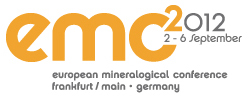|
12a Exploring the nanoworld: synchrotron and neutrons advances in environmental geochemistry and mineralogy |
|
Oral Programme
/ Mon, 03 Sep, 09:45–12:15
/ Room H 5
Poster Programme
/ Attendance Mon, 03 Sep, 17:00–18:30
/ Poster Area
|
During the last decade there has been a large increase in the number of third generation synchrotrons (e.g. Diamond Light Source, ESRF, Australian Synchrotron, SLS, DESY, ALBA, etc.) and neutron sources (e.g. J-PARC, SNS, FRM-II, ISIS-TS2) across the world. More are planned (e.g. ESS). These facilities cover a broad range of energies and momenta and can be used to study an incredible variety of samples and processes, virtually spanning the whole conditions of geological conditions. Environmental geochemistry and mineralogy research has benefited greatly from these developments, with special regards to the quantification of process kinetics, the attainment of extreme sample conditions, and the in situ characterization of transformations and reactions.
This session calls for recent and novel applications of synchrotron and neutron light sources to the study of different processes in environmental geochemistry and mineralogy. We aim at bringing together experimentalists who take advantage of the these techniques for the study of low-temperature environmental systems including aqueous geochemistry, soil science, carbon sequestration, biomineralization, metal and metalloid speciation studies in natural and contaminated environments, nano particles and colloid science, (bio)mineral/solution interface studies, environmental radiochemistry and other investigations having environmental/biomineralogical significance. The session will cover research using all types of synchrotron and neutron based techniques including, scattering (e.g. SAXS/WAXS and neutron scattering), diffraction (e.g.: high resolution X-ray and neutron diffraction, ED-XRD), infrared, XAS, X-ray microscopy, tomography, XPS, X-ray microprobe, etc., including in situ time-resolved studies. We encourage particularly contributions exploring new directions in geosciences research by developing new techniques in synchrotron sciences.
